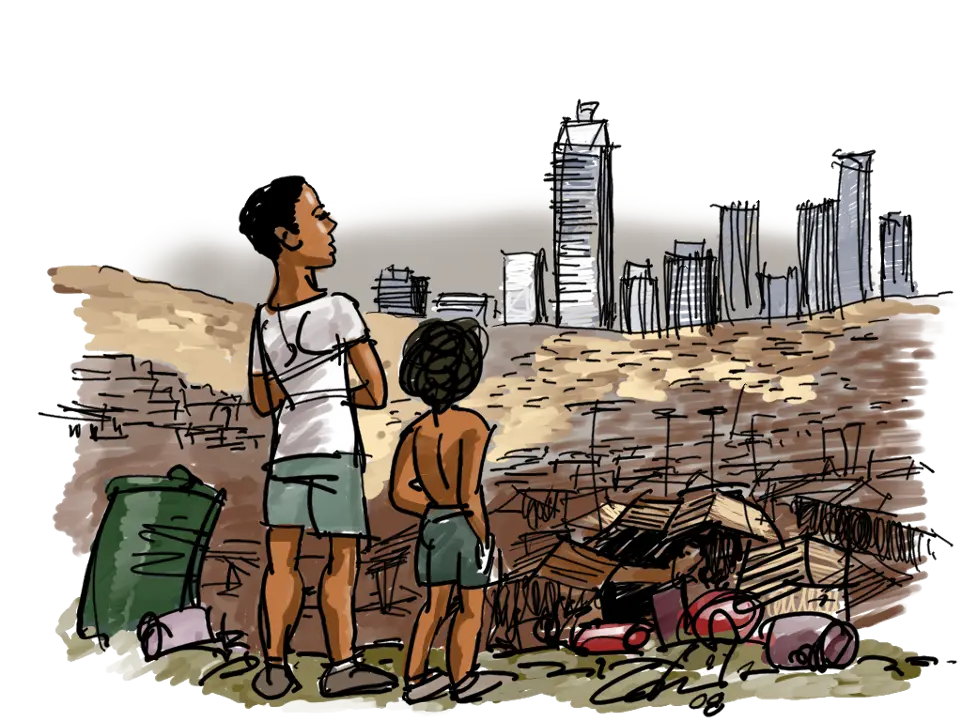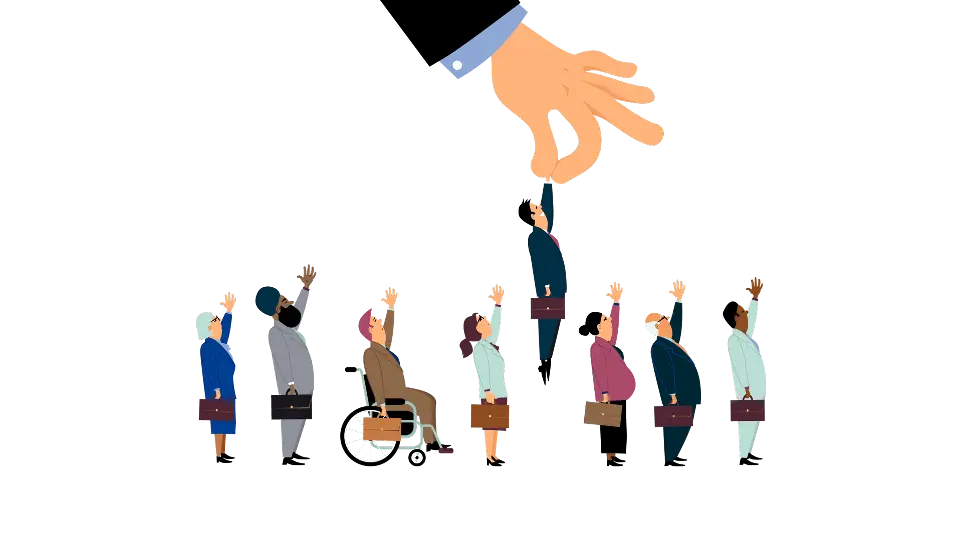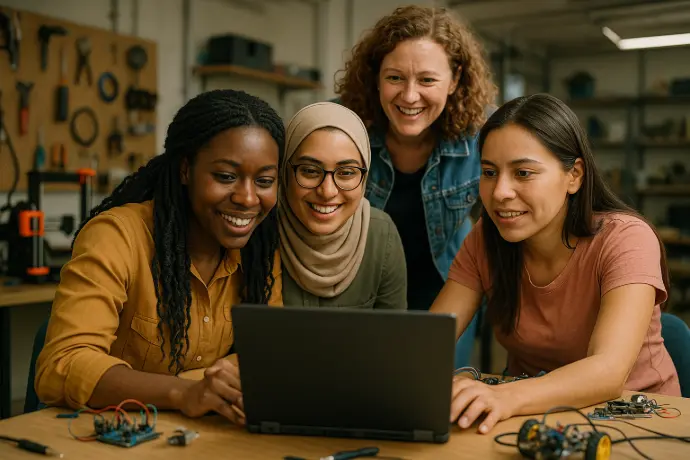Inequality:
Types, Consequences

We explain what inequality is and the types that exist. Also, the main causes and consequences of this problem of inequality.


What is inequality?
Inequality occurs when two or more things or situations are not equal, that is, they are not equivalent, fair, or corresponding. This can refer to very different things, depending on the context. The notion of inequality refers to the lack of equality. Two things, therefore, are unequal when they are not equal: that is, when they are dissimilar, asymmetrical or different. Inequality can also refer to the lack of equity, balance or equality between two or more people, things, facts or realities. In this sense, it can be related to social issues (social, economic, educational, gender inequality) with which the discipline of sociology deals.
- Social inequality
Social inequality is a very broad category, in which different aspects of people's lives are taken into consideration and the way in which these influence the opportunities they have, the place they occupy in society or the quality of life. what awaits you.
Social inequality can be understood as inequality in the place that people occupy in the world and in society, specifically with regard to their race and ethnicity, their economic position, their access to the institutions of a State, their work practice. and other similar aspects.
Social inequality is based on discrimination, that is, on the establishment of classes and types of people, some of which are acceptable and welcome, and others who are despicable and rejectable.
Social inequality manifests itself, for example, when a person is denied a job because of their gender, ethnicity, religion or sexual orientation. Another example is denying people of a low socioeconomic level entry to a store or an institution, since it is reserving certain opportunities, certain benefits and certain experiences for a specific, privileged sector of society. This usually translates into some having a lot and others, very little.
Consequences of social inequality
Social inequality has very concrete consequences that are very contrary to the harmonious development of nations or humanity. The perpetuation of poverty, the strengthening of resentment and the need for revolutions or violent conflicts are just some of them, since the discomfort of being stuck in immovable social strata usually leads to depression or rage in oppressed communities. .
On the other hand, the oppressed never manage to fully develop their potential, since the resources necessary to do so are being used by others, which causes an incalculable loss of human potential. And poverty, far from being a simple evil, is the source of numerous difficulties that are extremely difficult to combat: the risk to health, the increase in crime, class hatred, the deterioration of politics, etc.
- Economic inequality
Economic inequality or income inequality can be understood as only one aspect of social inequality, referring exclusively to monetary and economic matters. In other words, income inequality has to do with the unequal distribution of money, and therefore of the available goods and services, between the different actors in a society, or even between different countries in the world.
Thus, there are high-income countries and low-income countries. Their respective citizens have more or less opportunities for prominence in the world depending on which one they belong to; But within each of them, there are also citizens with high incomes and citizens with low incomes, that is, rich and poor social classes: the former have more than they need and the latter less than what they need.
Economic inequality, in a capitalist world, quickly transforms into other types of inequalities, given that everything revolves around money. Those who have more money can aspire not only to more and better life experiences, but also to more and better opportunities to make money, which means that wealth tends to accumulate in few hands, leaving many others in situations of need.
- Educational inequality
Educational inequality has to do with the unequal distribution of access to education, either globally or in a specific country. This allows illiterate people to coexist in the same country with people with many levels of education.
This inequality has an impact on each person's work capacity and therefore on their level of economic income: less educated people can aspire to lower-paid jobs and therefore constitute weaker households.
Furthermore, educational inequality forms a barrier between the popular classes and the wealthy, since education is much more than simply acquiring an economically profitable job: it is also a way of conceiving the world, of understanding the functioning of the State and, therefore, hence, independence. The most educated people are freer, for the simple fact of having greater conceptual tools in life.
Let's imagine, as an example, a person who does not know how to read or write. At first, you will have the physical energy of youth and will be able to perform demanding jobs that may not even be so poorly paid; but he will do it from the weakest position possible, since he will not even be able to read and understand the employment contract to which he adheres, and in the event that his employer fails to comply with any of the terms of it, he will not even you will be able to find out.
As he ages, his strength will begin to fail and with it probably the chances of making money, so he will have to depend on the rest of his family and the few opportunities that life, by chance, brings him.
- Legal inequality
Legal inequality or legal inequality refers to the significant difference in treatment by the State and law enforcement agencies that is given to citizens depending on their socioeconomic position, their ethnic group, their gender, religion or their sexual orientation, For example.
Situations of legal inequality generally provide softer and more considerate treatment to the wealthy classes, and harsher and more merciless treatment to the lower classes, which contributes to widening the gap between those who have more and those who do not.
Legal inequality can occur in the discrimination of certain human groups, withdrawing the protection of the law, or it can consist of differential treatment according to social stratum, such as when longer sentences are given to criminals of one race than to criminals of another, even though they both committed the same crime.
Legal inequality is typical of corrupt legal systems, authoritarian regimes and dictatorships, or of failed states and cultures in which racism, sexism or deep religious fundamentalism prevails.
- Gender inequality
Gender inequality is a form of social inequality, which has to do with discrimination based on sex or sexual orientation. This means that certain individuals are deprived of economic, educational, legal or cultural opportunities for the simple fact, for example, of being born a woman or of being a homosexual person.
Gender inequality is evident in the contemporary world in many ways, and is a symptom of a sexist and patriarchal culture, which provides fewer opportunities for women in terms of educational and professional development, or legal protection, than for men. . This is a source of economic, educational and legal inequalities, naturally, such as women receiving lower salaries for doing the same work as a man (the so-called “gender gap”).
Causas de la desigualdad social
There are numerous causes behind the social gap. However, among the most significant are some like these:
-Corruption, which translates, above all, into tax evasion and tax havens by those in high places. A situation that affects the country's economy.
-The existence of unfair tax systems that mean that those who have less continue to have to pay more than those who have a more buoyant economy.
-The privatization of public services is also responsible for the aforementioned gap, since it makes it difficult for people who do not have a solid economy to access them.
-The unfair distribution of land as well as investment in a country is another cause of the existence and growth of the social gap.
Goal 10: Reduce inequality within and among countries
Inequality threatens long-term social and economic development, harms poverty reduction and destroys people’s sense of fulfillment and self-worth. The incomes of the poorest 40 per cent of the population had been growing faster than the national average in most countries. But emerging yet inconclusive evidence suggests that COVID-19 may have put a dent in this positive trend of falling within-country inequality.
The pandemic has caused the largest rise in between-country inequality in three decades. Reducing both within- and between-country inequality requires equitable resource distribution, investing in education and skills development, implementing social protection measures, combating discrimination, supporting marginalized groups and fostering international cooperation for fair trade and financial systems.

Why do we need to reduce inequalities?
Inequalities based on income, sex, age, disability, sexual orientation, race, class, ethnicity, religion and opportunity continue to persist across the world. Inequality threatens long-term social and economic development, harms poverty reduction and destroys people’s sense of fulfillment and self-worth. This, in turn, can breed crime, disease and environmental degradation.
We cannot achieve sustainable development and make the planet better for all if people are excluded from the chance for a better life.
What are some examples of inequality?
Women and children with lack of access to healthcare die each day from preventable diseases such as measles and tuberculosis or in childbirth. Older persons, migrants and refugees face lack of opportunities and discrimination – an issue that affects every country in the world. One in five persons reported being discriminated on at least one ground of discrimination prohibited by international human rights law.
One in six people worldwide has experienced discrimination in some form, with women and people with disabilities disproportionately affected.
Discrimination has many intersecting forms, from religion, ethnicity to gender and sexual preference, pointing to the urgent need for measures to tackle any kind of discriminatory practices and hate speech.
How do we tackle discrimination?
In today’s world, we are all interconnected. Problems and challenges like poverty, climate change, migration or economic crises are never just confined to one country or region. Even the richest countries still have communities living in abject poverty. The oldest democracies still wrestle with racism, homophobia and transphobia, and religious intolerance. Global inequality affects us all, no matter who we are or where we are from.
Can we achieve equality for everyone?
It can – and should be – achieved to ensure a life of dignity for all. Political, economic and social policies need to be universal and pay particular attention to the needs of disadvantaged and marginalized communities.
What can we do?
Reducing inequality requires transformative change. Greater efforts are needed to eradicate extreme poverty and hunger, and invest more in health, education, social protection and decent jobs especially for young people, migrants and refugees and other vulnerable communities.
Within countries, it is important to empower and promote inclusive social and economic growth. We can ensure equal opportunity and reduce inequalities of income if we eliminate discriminatory laws, policies and practices.
Among countries, we need to ensure that developing countries are better represented in decision-making on global issues so that solutions can be more effective, credible and accountable.
Governments and other stakeholders can also promote safe, regular and responsible migration, including through planned and well-managed policies, for the millions of people who have left their homes seeking better lives due to war, discrimination, poverty, lack of opportunity and other drivers of migration.

 IHRO NEWS
IHRO NEWS
